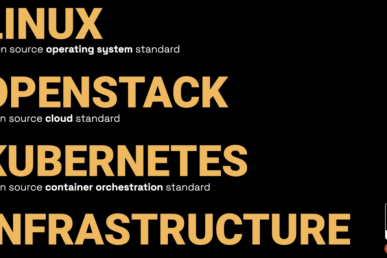This article originally appeared on Solinea’s blog. Francesco Paola is the CEO of Solinea with over 20 years of global leadership experience in the Financial Services and Technology industries. He helps Fortune 1000 firms develop their cloud computing strategies and has contributed to the proliferation of global cloud infrastructure deployments for global telcos and CSPs. You can follow him on Twitter.
This is the first of a two part series that highlights what executives need to consider when investing in an OpenStack cloud infrastructure. It turns out that the biggest obstacles to the successful implementation of an OpenStack cloud have nothing to do with technology…
Part One: Enable change in the Enterprise
Recently Ken Pepple and I had the pleasure of hosting the OpenStack Boot Camp at Interop New York.
We were honored to share the stage with some very prominent speakers from diverse parts of the OpenStack ecosystem and exchange insights into how far OpenStack has progressed since its inception four years ago, what the research analysts are seeing from their purview, how some enterprises have successfully deployed and are running OpenStack clouds on-premise, and what to look for when introducing OpenStack into legacy IT environments.
From a CEO’s perspective, the point I wanted to hit home is that successful OpenStack deployments require more than just a strong command of the technology. In fact, the biggest challenges we have seen have nothing to do with technology, but rather have to do with Governance, Processes and Skills.
The change to the enterprise will be revolutionary, and building and maintaining a case for OpenStack is crucial. Here are some key points I drove home at the Boot Camp, some of them obvious but surprisingly often overlooked:
- Justify the investment in OpenStack upfront, from a business perspective, not only in terms of cost but also agility – markets and technology are moving way too fast to keep up with conventional technology and processes.
- Define success metrics up front, otherwise there is no way you can justify the investment. They can be technical, e.g. performance, TCO, (cost avoidance, or cost savings in the long-term), process related such as improved developer productivity, etc. But you do need to define them first.
- Emphasize that the standardization required to make OpenStack (or for that matter any cloud) work also addresses quality – repeatability and standards give an enterprise less room to customize utility services, allowing application developers to focus on what they should do best—create innovative services for customers—not getting bogged down with infrastructure decisions.
- Make sure it’s the use cases and workloads that define the architecture. All OpenStack clouds are not architected the same – a cloud supporting Big Data is very different from a cloud that supports streaming media, or dev/test environments.
- Include security, compliance, risk management and audit into the conversation early… given everything that is happening today with hacking and security breaches, introducing new technology into an enterprise will immediately raise red flags, so it’s better to have these guys on your side rather than asking for forgiveness later.
- Define, early on, how the cloud will integrate into your existing legacy infrastructure, i.e. how is your organization positioned in terms of embracing a new technology? Does your current IT and Operational organization have the skills to run an OpenStack environment? Both Comcast and Bloomberg demonstrated at the OpenStack boot camp that the integration can be done, though it is no small feat. A long-term roadmap is elementary.
- Build a special forces team, with people that are really excited about the potential of the new platform, work out the kinks in the processes within a controlled environment, build out the center of excellence with the required skills, then populate the organization with these champions. Ideally you can do this outside of the legacy IT/Operations environment. Change does not come easy to people entrenched in comfortable routines.
In my next post, I will discuss the more common Critical Success Factors for an OpenStack cloud implementation. Stay tuned.
Also Read:
Photo by Financial Times // CC BY NC
- Making the Case for OpenStack–You’d Be Surprised What Enterprises Overlook - October 15, 2014

)










